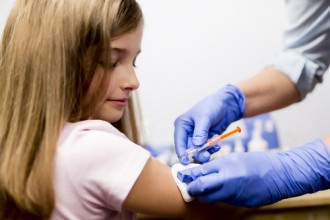It can be tempting as a parent to corral and contain your child’s emotions when they encounter difficult news, but it’s important to talk through disturbing media moments to keep our kids emotionally healthy.
While our children may not always understand the nuances and meanings of complex and disturbing topics that may appear on the news, it does affect them. Here are the steps you can take to have a great dialogue about things you hoped you’d to never have to discuss:
Find out what the child has seen.
You’ll help children understand the situation in a news story and you’ll redirect some of the raw emotions by asking questions. For example, “What did you see? What did the person do? What did you think was happening?” This gives them the chance to make new meaning from what they’ve seen and put their ideas in order.
Give a simple description.
Using simple words to describe what happened gives children a way to store the information in their minds. It also helps to neutralize strong emotions and panic by putting the children’s focus on something they can understand. For shooting, you can say, “Someone used a gun to hurt people.”
For hate crimes or bullying, “Someone was mean (bad) to someone who was different from them.” For rape or sexual abuse, “A person hurt someone else.” For kidnapping, “Someone took a girl away when she didn’t want to go.” For theft, “A man took something without asking. What’s that called?” (Child: Stealing. Like when someone took my crayon box at school.) “Yes.”
Let children respond.
After providing a simple description of what was reported in the news, I usually pause to see if the child wants to say something. “That’s bad, mommy/daddy.” “I don’t like that.” “I don’t want to know that person.” You can support children in their observations in neutral ways without joining them in biases, by saying, “I understand. It’s hard to know why things like this happen, but I’m so glad you came to talk to me.”
Avoid biases.
It’s a good idea to steer away from words that refer to ethnic background, weight, appearance, religion, etc. unless that’s really important to the discussion and you’re prepared for a longer dialogue. Children won’t understand the references and they’ll just absorb the feelings behind the words.
For example, it’s better to say “girl” and boy” or “man” and “woman” rather than “cute kid” or “old lady”, “some homeless dude,” etc.
Allow questions about feelings.
Children are sensitive to feelings and a challenging dialogue can be an opportunity for social-emotional learning. For example, if children ask about why a person “did things to other people”, it’s good to go general rather than searching for a specific answer.
For example, “I love you and I know you, so I can understand your feelings. But it’s hard to understand the feelings of someone we don’t know. So we can only guess. Maybe that person was unhappy for a long time and there was no one to help him.” Or “Maybe that person was angry for a long time and got confused and made a mistake.”
Affirm the safety of your family and home.
As your discussion comes to a close, it’s helpful to come full circle and reassure the child that “The important thing is that you are safe with Mommy and Daddy and we’re going to make sure that nothing bad happens to our family.” Or better yet, borrow from Fred Rogers, whose mom told him, “When you’re scared, look for the helpers. You will always find people who are helping.
Let them “help.”
Often, when children have talked to me about a natural or unnatural disaster, I’ll ask them if they would like to try to help. If they say, “yes”, I’ll ask, “What could we do to help? Let’s think about it.” Here are some of the answers I’ve gotten:
- Call and leave a message.
- Draw a picture of something happy to make them happy again.
- Make a card together and tell them we are sad for them.
- Save some pennies and send them.
- And my favorite: Hold that person in my heart and send them some love.
Parents don’t have answers for everything, and we never will. We just need to provide the stability and love that lets our children know it’s okay to come to us with their concerns and ask questions. Reflecting on those questions together can actually bring us closer, make us kinder and more compassionate. Really, it’s OK to be confused. It’s OK to be sad…because it shows we care. Then, maybe, we can try to help.
Nicole Dreiske is an educational innovator, children’s media expert and the author of the Upside of Digital Devices: How to Make Your Child More Screen Smart, Literate and Emotionally Intelligent.





